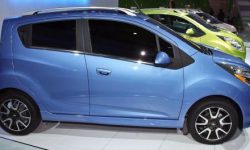Turbochargers are used to make small engines put out a lot of power while still remaining fuel efficient. Beyond BMW turbochargers and Audi turbochargers, even family cars offer turbocharged models these days. Before you get a turbocharged vehicle there are a few things you should be aware of.
A turbocharger or “turbo” is a purely mechanical device that boosts engine power by pushing air into the engine. This allows the engine to burn more fuel with every revolution, making it more powerful. Cars without turbochargers are referred to as “naturally aspirated.” Turbochargers allow automakers to decrease the size of the engine while maintaining the same amount of power and improve fuel economy.
A turbo is attached to the engine near the exhaust manifold. Gasses coming directly out of the engine pass through the turbo first, spinning a turbine inside at thousands of revolutions per minute. The turbo uses this power to pressurize the fresh air going into the engine, forcing more air in than it would normally.
It’s like a pair of big fans, one being driven by the exhaust gases and the other pushing air into the engine. The fans are connected so the exhaust gasses spinning the first fan also spin the fan pushing the fresh air into the engine. The cars computer reads the increased oxygen coming into the engine and thus compensates with more fuel to create the proper air-fuel mixture. This makes the explosions in the cylinders bigger and more powerful, thus making the engine more powerful.
It is desirable because you get an increase in power and fuel efficiency. The turbo is driven by the exhaust gasses so it only goes as fast as your engine’s output of exhaust; so basically it only works hard when you need it to.
The downside is, in the beginning turbos got a bad reputation for failing frequently. They had also been known to “lag,” meaning there was a slight delay between the driver pressing on the gas and the turbo pushing more air into the engine. Both problems have since been addressed through advanced new designs and modern technology. It is true however that turbos have more parts than naturally aspirated engines, which make them more expensive to manufacture. This usually translates to a higher price tag.
Many modern vehicles come with turbocharged models. Volkswagen, Ford, and Chevy all have family cars on the market that have turbocharged models for sale. By providing more power and greater fuel economy, turbocharged vehicles are a great option for today’s families





